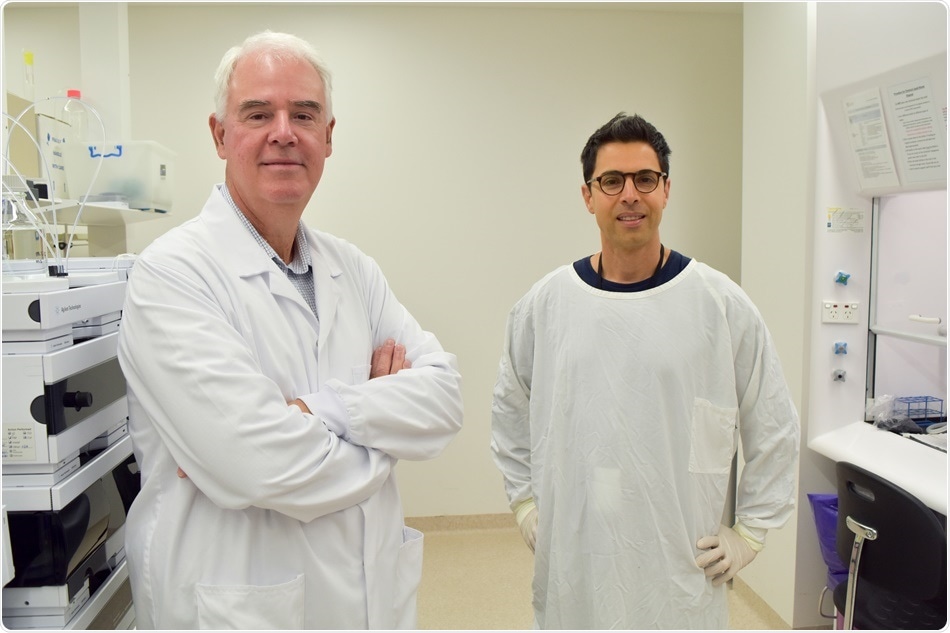A ground-breaking discovery by Centenary Institute scientists has provided new understanding as to the nature of proteins and how they exist and operate in the human body.

Professor Philip Hogg and Dr Diego Butera
The key finding–the changing state of a protein’s structural bonds–is likely to have significant implications as to how proteins are targeted by medical researchers, particularly in terms of drug development and the fight against disease.
Proteins are responsible for all of life’s processes and had previously been considered to exist in an intact single state when mature. The new study however has found two human proteins involved in blood clotting and immunity existing in different and changing states.
The most sophisticated molecules made in nature are proteins which consist of unique sequences of amino acids. Disulfide bonds link the amino acid chains together and were thought to just stabilize protein structure.”
Dr Diego Butera, ACRF Centenary Cancer Research Centre and lead author of the study
Previously it has been believed that these disulfide bonds were fully formed in the mature and functional protein. In this study however, the researchers found that the proteins are being produced in multiple disulfide-bonded states.
We were able to precisely measure whether the disulfide bonds in the blood proteins were formed or broken. Remarkably, we saw that the proteins were made in multiple, possibly thousands, of different disulfide-bonded states.”
Dr Diego Butera
Professor Philip Hogg, Head of the ACRF Centenary Cancer Research Centre and senior author of the study believes that their research will change how proteins are viewed and targeted in future drug and medical experiments.
“It’s very likely that we will find many other proteins that exist in multiple states. Crucially, a drug may bind more or less preferentially to different states, impacting the effectiveness of the drug.”
“In experimental settings, differing states of a protein should now be considered as part of the investigative medical research process,” Professor Hogg said.
The study was published in the prestigious science journal ‘Nature Communications’.
Source:
Journal reference:
Butera, D & Hogg, P.J. (2020) Fibrinogen function achieved through multiple covalent states. Nature Communications. doi.org/10.1038/s41467-020-19295-7.